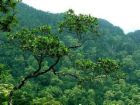Foreign colonizers raped Philippine forests

If you witness how deplorable the situation of the Philippines forest resources today, blame it on the the foreign colonizers, whose underlying motives then were to take advantage on the ignorance of the Filipinos.
Environmental studies showed that foreign colonizers have abused the rich Philippine forest resources and reaped whatever by-products they could take away in the guise of putting the country's forest resources under the control, ownership and administration of the state.
Between 1866 to 1887, the Spanish government, under its Regalian Doctrine, strictly regulated forest use and prohibited unauthorized encroachment into forestlands and illegal cutting of timber, says David Gould in his paper "The Evolution of Land Tenure in Forestry Management in the Philippines" in 2002.
Invoking the issuance of Royal Decrees from the Spanish crown, "kaingin" making or shifting cultivation, which was the main source of livelihood of most indigenous people, was prohibited, the paper cited. Thinking that the American occupation would put a stop to this practice, the natives were wrong. When they took over the helm of government, after the Spaniards were defeated during a battle at Manila Bay, the Americans continued the idea of Regalian Doctrine to maintain the state-controlled management of the forest resources," it added.
"Such control benefited US commercial interests," the paper stated. Under the American system, the local administration retained the authority of classifying land into private and public domain. "It also handled the decisions on licenses for forest exploitation. The Americans' demand for cheap timber became its prime motivation for formulating forest policies during its colonial administration."
Before the Spaniards came to the Philippines, land ownership at that time was generally communal. This means that anybody could establish ownership of such provided he was the one who cleared and cultivated it first, Gould said.
At that time, nobody owns the land. But with the arrival of the Spaniards, policy changes were effected. One major challenge was the enactment into law of a state law that legalized through the institution of land titling. Eventually, the system of communal ownership and the traditional method of acquiring land through actual occupation and cultivation was superseded. Such was the birth of the Regalian Doctrine, which vested the ownership of all land in the country under the Spanish crown.
The paper said these policies benefited the privileged few and resulted in massive destruction of the country's forest resources. State ownership and control of forestlands was perpetuated by the first Constitution of the independent Philippine Republic in July 4, 1946. It stipulated in Section 1, Article 13 that all timber lands "belong to the State".
The situation reinforced the massive timber exportation earlier established by the Americans. By the 1950s logging business had grown so profitable that timber licenses proliferated. From a licensed area of 4.48 million hectares in 1959, it more than doubled to 10.59 million hectares in 1971, accounting for one-third of the country's total land area.
The paper cited a Forest Management Bureau data that the timber license control of one third of the country's land area was sustained from 1971 to 1977 after which it gradually decreased to the current 1.4 million hectares. "As in colonial period, timber utilization had been the monopoly of the monetized, more influential and usually politically connected representing a tiny portion of the citizenry.
Meanwhile, occupants of the public domain, including indigenous peoples, were continuously treated as squatters and threatened with eviction or imprisonment if found clearing forest from public land."


Comments